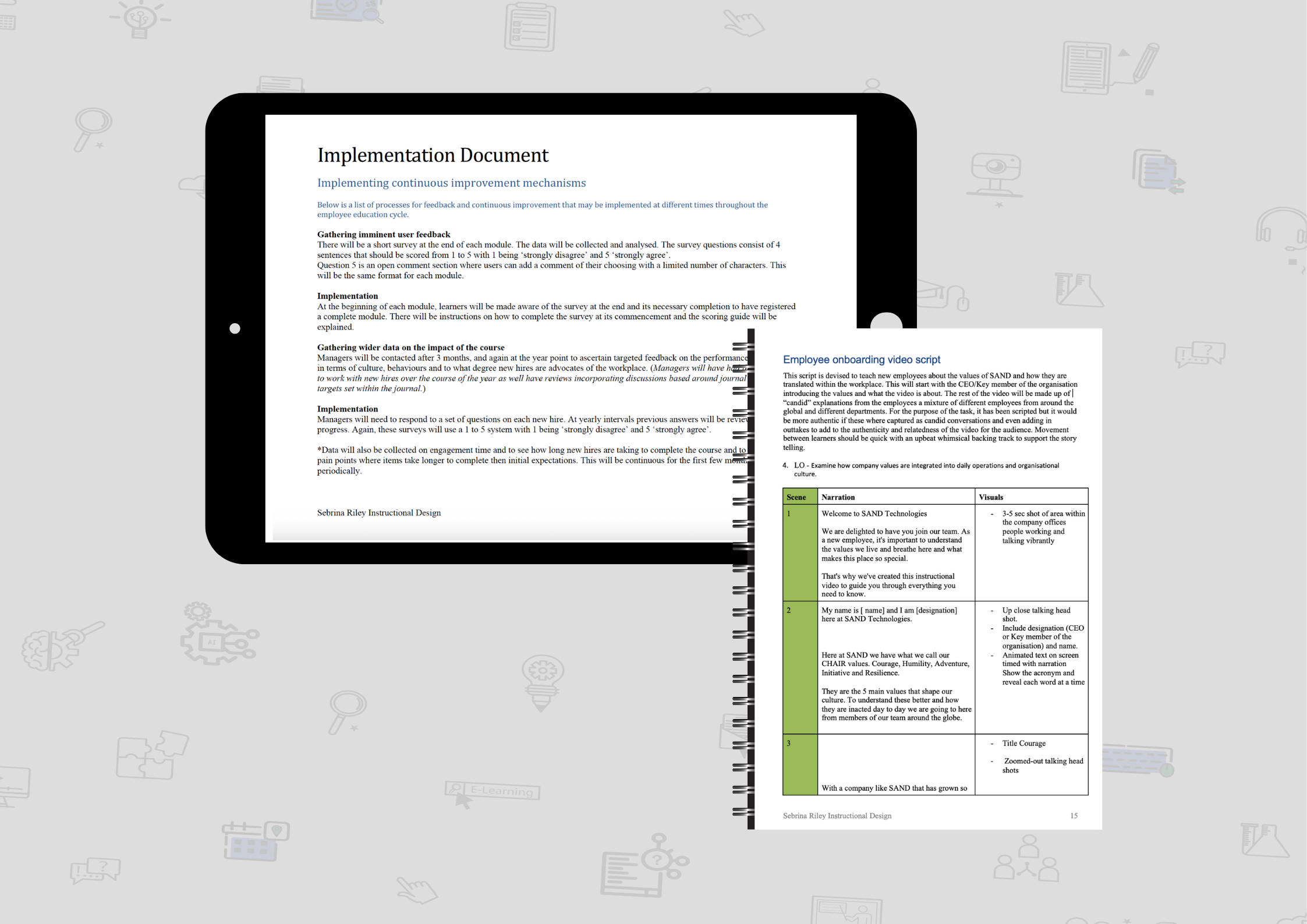Sand Technologies:
Onboarding Programme
Project Title:
SAND Technology Internal Onboarding Programme
Role:
Instructional Designer
Tools used in Development:
PPT, Google Docs, Articulate Rise, Logic Pro X, Miro, Trello, Synthesia, Final Cut Pro, Canva
Time in Development: 6 - 8 weeks
Client: SAND Technology
Executive Summary
This project supported SAND Technologies, a global company with over 450 employees, in transitioning from in-person onboarding to a scalable online model. As the company continues to grow, the existing onboarding approach was no longer sustainable and struggled to offer a consistent, personalised experience. The new digital training was designed to streamline onboarding, improve accessibility across time zones, and maintain the company’s values-led introduction for new hires.
Challenge
SAND Technology planned to grow its workforce by over 33% in a single year. This rapid expansion led to a noticeable decline in cultural cohesion, with new hires reporting a lack of connection to the company’s mission and values. Analysis of documentation retention data revealed key gaps in the existing onboarding process, including inconsistent information delivery, limited scalability, and weak engagement. To address this, the onboarding solution focused on three core objectives: consistency in messaging, scalability across global teams, and a sense of belonging for new employees. The final solution included a digital onboarding module that covered the company’s history, business model, and values, paired with a live virtual induction that integrated group activities, mentorship, and reflection to create a meaningful and connected experience.
Solution
To support consistent and scalable onboarding, I created a blended learning solution combining eLearning with a live virtual induction. The eLearning modules allowed for automation, tracking, and global distribution, and were informed by learner profiles that helped shape the tone, script, and visual style to reflect the company’s culture. The live induction experience was designed to build personal connection through group discussion, reflection activities, and a structured mentorship programme. Mentorship played a key role in helping new hires understand cultural norms and build relationships with more experienced staff.
A major challenge during development was limited access to an SME.
To overcome this, I relied on internal documentation and used scheduled SME and HR time strategically, focusing only on targeted questions that directly informed content design, which reduced the need for ongoing support during development.
Results
This project reinforced the importance of efficiency when collaborating with stakeholders and SMEs, especially across time zones. By clearly communicating expectations in advance and using project management tools like Trello, we were able to maintain momentum and transparency throughout the process. The iterative design cycle, supported by regular feedback, strengthened the final product and ensured alignment with company needs. The solution was well received by stakeholders, with particular praise for its accessibility to second language speakers and its scalable format. Since full implementation, the company has reported a lower than expected attrition rate, with only 2% of new hires leaving within the first three months despite recruitment numbers exceeding projections.




